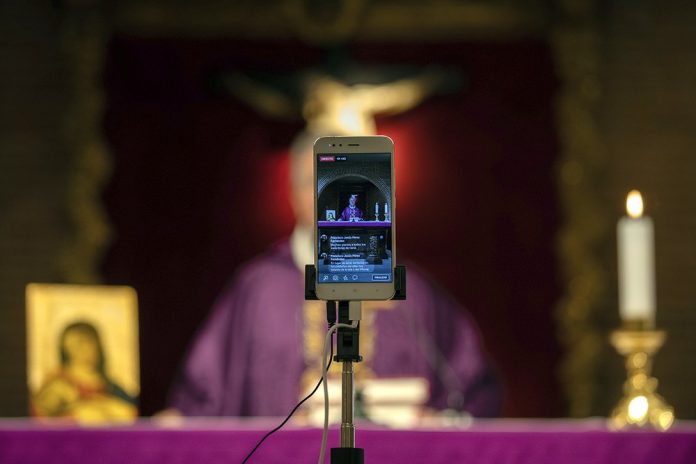C. Christopher Smith is founding editor of The Englewood Review of Books and author of “How the Body of Christ Talks: Recovering the Practice of Conversation in the Church.”
The coronavirus pandemic has quickly swept the globe, throwing just about every human institution into chaos. Faith communities are no exception.
With gatherings restricted in size or prohibited altogether, many houses of worship are fighting to stay connected, rapidly weighing technological options to keep as many people as possible engaged.
This involves a a good deal of trial and error. Congregational leaders find themselves relying on multiple digital tools — some of which they have never used before — to connect themselves to their members and to keep their members caring for each other.
As stressful as these times are, they have provided an extraordinary opportunity in my Christian community to reflect on our identity and mission as the church, and to imagine ways of being more connected than ever with our fellow church members.
In normal times, most churches plow forward without much reflection on identity and mission.
Now they have the chance to do something new, and I challenge churches to take a wee bit of time to reflect together on questions like these:
What is the church? A building? A particular gathering? A community?
What is worship? What really matters in a worship service? And given the limits forced on us by the pandemic, which technological tools can best help us embody our identity and mission?
With more than a decade of experience in the IT industry, I am keenly aware that our technological decisions shape who we become. Our decisions now will shape us not just over the span of this pandemic, but beyond it as well.
The nature of Christianity will shape those decisions. Following its Jewish roots, Christianity is primarily a social faith, embodied in communities that express this faith in their everyday lives. Christianity is also incarnational, highly valuing bodily presence — both the presence of God-with-us and our presence with one another. We have no greater gift to give one another than our full, undivided presence and attention.
Josh Kellso, a pastor at Grace Bible Church, delivers a sermon via livestream for virtual attenders from an empty sanctuary March 22, 2020, in Tempe, Arizona. Many houses of worship have suspended all in-person services and programs and moved to online services in compliance with guidelines from the federal Centers for Disease Control and Prevention to promote social distancing in the effort to slow the spread of the COVID-19 coronavirus. (AP Photo/Matt York)
The Apostle Paul imagines churches as the body of Christ, a powerful metaphor of interactive community in which there are no extraneous members and in which everyone has a role to play. We are called to be active participants in our faith, not just passive consumers of religion.
What do these essential convictions mean for our choices about technology and connection?
Not all technological platforms are created equal. Some technologies allow us to be more present than others. Videoconferencing platforms (Zoom, Google Hangouts, etc.) that allow all participants to be seen and heard are much better than webcasting platforms (Facebook Live, etc.), designed for passive consumption. Audio-only tools (phone conference calls) are not as fully participatory as videoconferencing, but are better than passive media. And even Facebook Live, with its capacity for real-time commenting, is a little more participatory than solely passive broadcasting platforms — but it is much closer to the passive end of the spectrum than to videoconferencing.
Medium-to-large churches may want to foster smaller groups. While a larger Sunday service is probably best as a webcast, small groups should be encouraged to meet using videoconferencing platforms such as those named above to foster presence with one another in that setting.
These groups might have a suggested order of worship that outlines the prayers, songs and Scripture passages to be read and discussed. Allow a short time of sharing what’s going on in our lives — much needed in this rapidly spinning chaos! My own church has implemented a daily 8 p.m. Zoom call that is open to all members for praying and sharing together.
Don’t rule out the possibility of legal, healthy physical presence. Especially in climates warm enough for people to be outdoors, churches are finding creative ways for smaller groups of people to come together outdoors with the necessary health precautions.
As long as it is not legally restricted, church members can interact with social distancing on porches, in backyards and in a walking, running or other exercise group that doesn’t require close proximity. One local pastor I know visits church members on his daily run, stopping by their houses and talking with them outside.
Our means of connecting and being the church in this tightly restrictive season will undoubtedly shape the future of our faith. I pray that we will be contemplative and creative in the discernments that we make along the way and that this pandemic will be looked back on as a season of energy and growth for generations to come.
Source: Religion News Service
All Content & Images are provided by the acknowledged source
